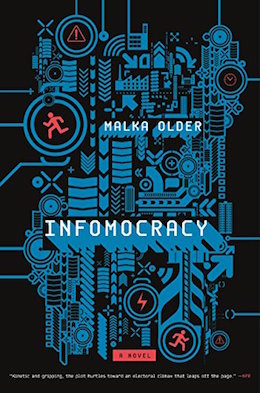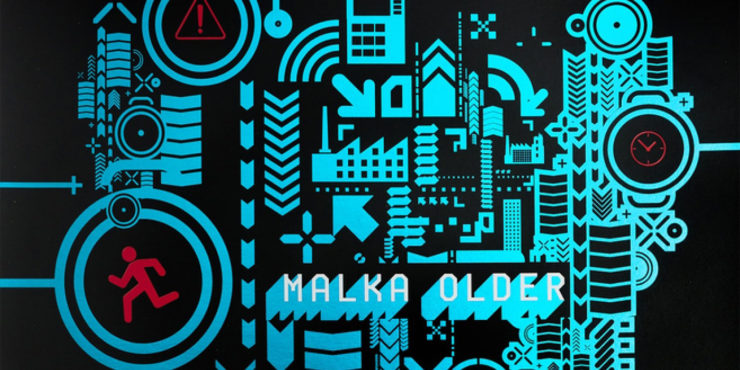My family’s first computer had a 41 MB hard drive. I saved my carefully crafted teenage observations of life on 1.5 MB floppy discs that never seemed to be filled to capacity. Two years later, I moved away to go to college. I brought with me a laptop computer with a 240 MB hard drive. I was a very proud owner of this technological marvel, even though I had no idea what to do with all that storage space. Since 2005, we have been living in the age of Web 2.0 and Big Data. Now, I download 240 MB of data every time I update the apps on my smartphone.
The exact origins of the term “Big Data” might be in dispute, but its meaning is clear. Big Data gets its name from the enormous amounts of digital information generated, collected, and stored every second.
Big Data includes all the data generated by users on the internet. As soon as you go online, internet providers, social media platforms, newspapers, stores, communication apps, and blog platforms trace your every move and store your data for later use or sale.
Malka Older’s novel Infomocracy, part one of The Centenal Cycle trilogy, presents one version of what a future dominated by Big Data might look like. The novel takes place during the second half of the 21st century, after the unregulated use of Big Data has caused the collapse of nation states and the creation of a new world order called microdemocracy. Microdemocracy is based on small communities called centenals that are governed through a global network of direct democracy. To function, this network depends on the use of Big Data, now controlled by an organization simply known as Information.
Buy the Book


Infomocracy
One of the benefits of Big Data is the speed at which information can be gathered and processed. Today, we run analytics that process large amounts of data in seconds. In Infomocracy the speed has increased even further and the processing now takes a nano-fraction of a second. The search result is immediately displayed in the fields of vision of the characters and shared between them as 3D projections of the still-to-come Web 3.0.
The momentum of the story of Infomocracy depends on this incredible speed, but the plot is based on what happens when Information’s global digital network is hacked and the democratic process is compromised.
As a historian, reading Infomocracy is interesting because the system of microdemocracy is introduced without any sense of its history. The story takes off with no explanation as to how the world got to where it is. But, in order to protect democracy when it is under attack, the characters are forced to revert back to older technologies for security reasons. In addition to communicating digitally, they travel so that they can speak to each other in person. They take notes with pen and paper. They even send telegrams.
As Null States and State Tectonics, parts two and three of The Centenal Cycle, show, the reliance on super-fast Big Data, and the complete surrendering of privacy and integrity that follows, comes at a cost that arguably could have been prevented had the characters been familiar with the history of Big Data as we know it. Furthermore, the characters’ reliance on Big Data as something without a history falls in line with the general view of Big Data today—namely that it’s a way of gathering information that will take us into the future without a historic precedent.
While Big Data and Web 2.0 have ushered in new ways of gathering and processing data, they are, in fact, not new at all. Historians have been using Big Data to do research for decades, especially within the sub-discipline of historical demography. Historical demography is the quantification of information found in church records, censuses, tax records, and government records to calculate the rates of migration, mortality, births, marriages, and levels of income at a particular time and place in history.
To make their job easier, historians use population data collections, which are databases that collect population data and make them searchable, initially by using punch cards and later by using electronic databases. Two of the largest of the collections can be found in Sweden and the U.S., respectively. In Sweden, the Center for Demographic and Ageing Research hosts the Demographic Database that consists of population records that go all the way back to the 17th century. In the U.S., there is the Integrated Public Use Microdata Series (PUMS) that gather census and population data from around the world.
Distant reading is a Big Data research method that enables historians to create their own computer programs that search thousands of digitized historical documents for specific keywords. In The Centenal Cycle, news compilers use distant reading to provide users with instantly curated feeds in their field of vision.
Another way of using Big Data for historical research is the semantic triple, which is based on simple sentences that contain three pieces of key information that can include verbs as well as nouns. The online database Enslaved: Peoples of the Historic Slave Trade, which is set to launch later in 2020, utilizes the semantic triple to create a massive data hub, enabling scholars and the general public to track the lives of individual Africans enslaved in North and South America.
Big Data is only the latest stage in the creation, storing, and utilization of data by human beings. Humans have been gathering, storing, and analyzing data since we first began organizing society in a way that made it difficult to keep track of everything by memory alone. All external collections of data will be considered “big” because they are big compared to the storage units that came before.
Malka Older’s The Centenal Cycle underlines the fact that Big Data is the future of the future. But, as Older’s novels also make clear, it is important to remember the close relationship between Big Data and history—and to maintain and analyze what we know of the past—in order for the history of the future to be secured.
Erika Harlitz-Kern is a freelance writer and historian with a PhD from the University of Gothenburg, Sweden. When not reading and writing about fantasy and science fiction, she teaches history at Florida International University in Miami, and spends her free time in Florida’s wetlands, silently thanking the alligators for not turning her into a snack.










